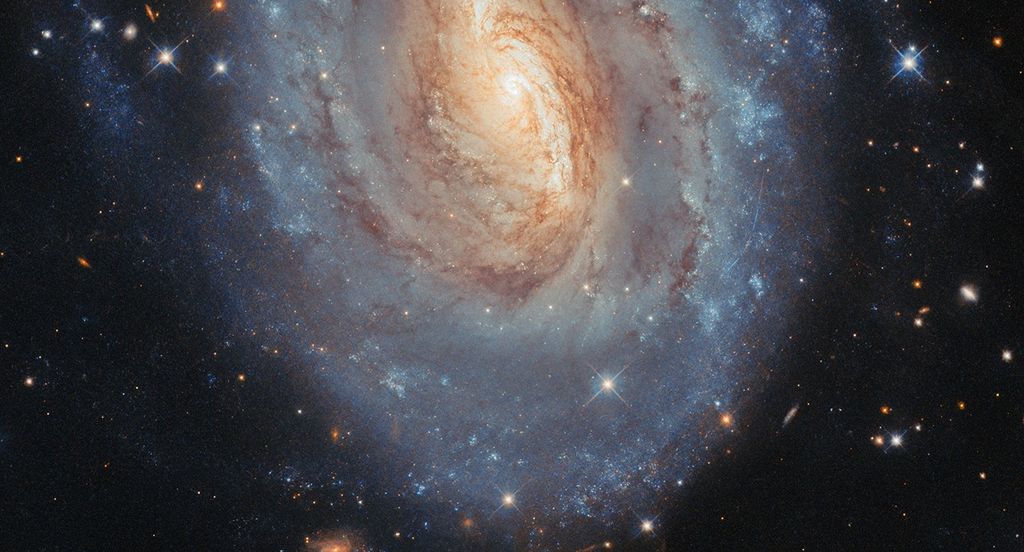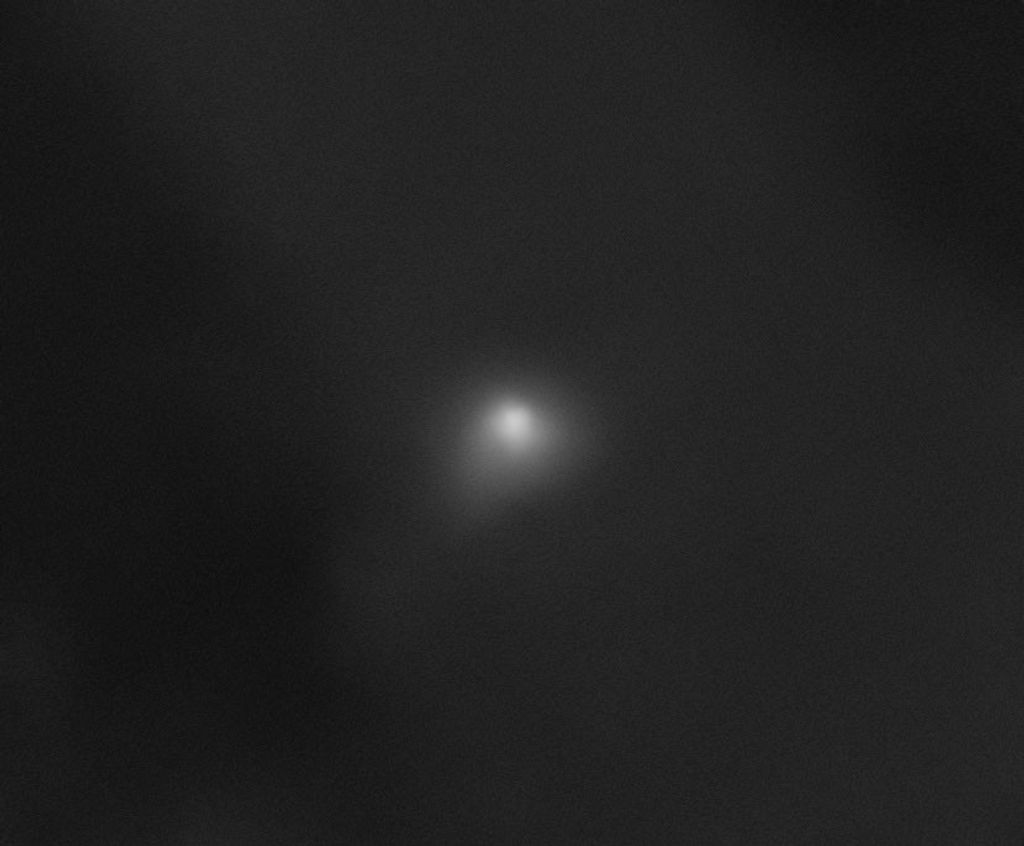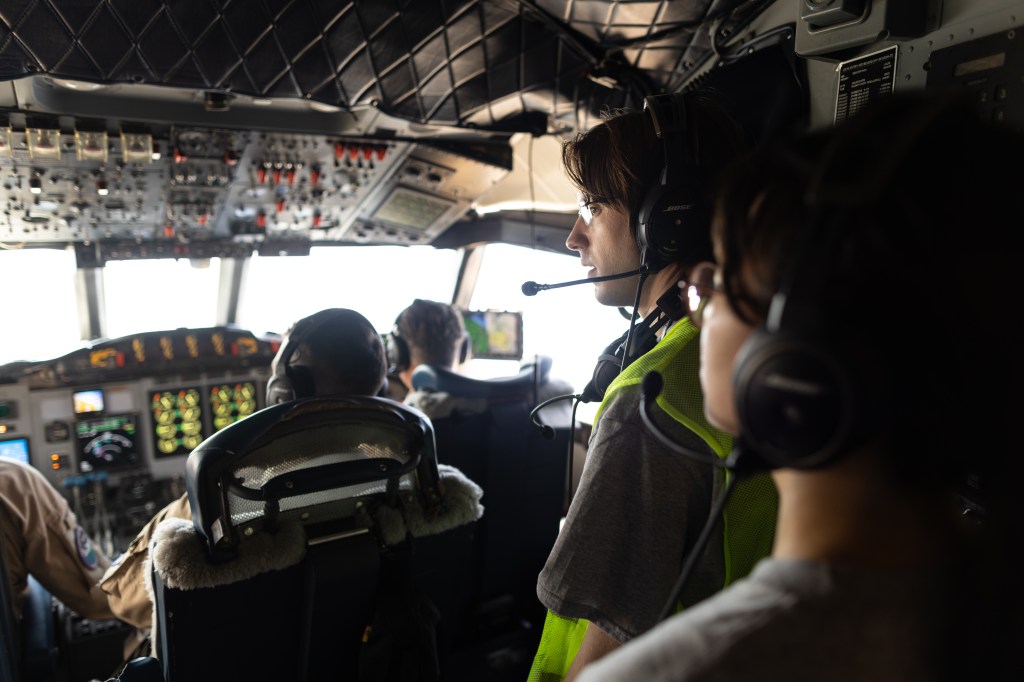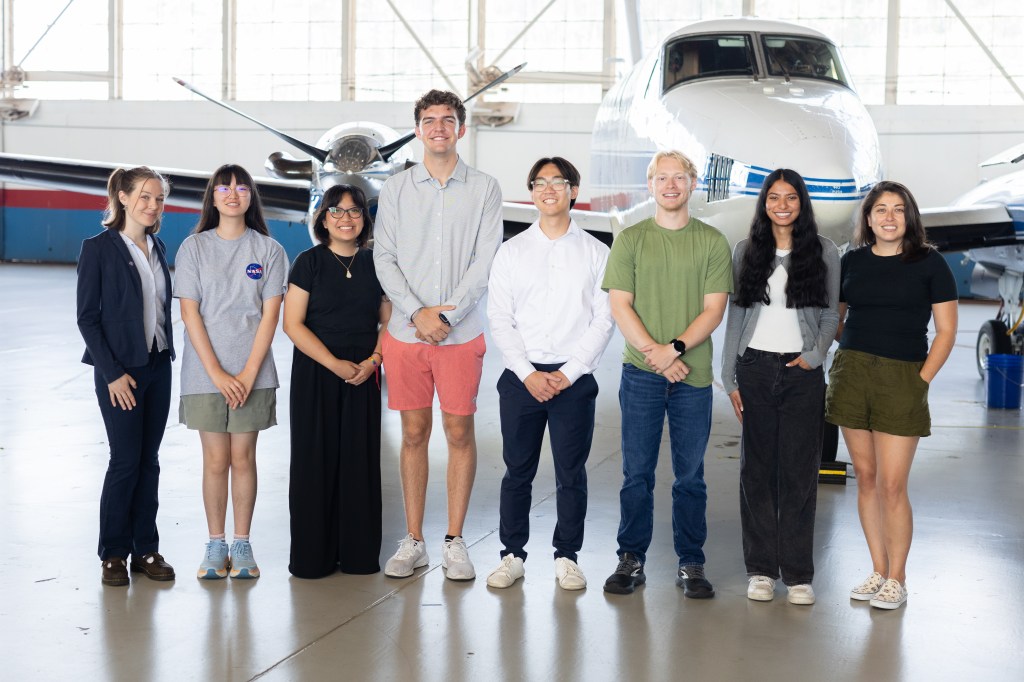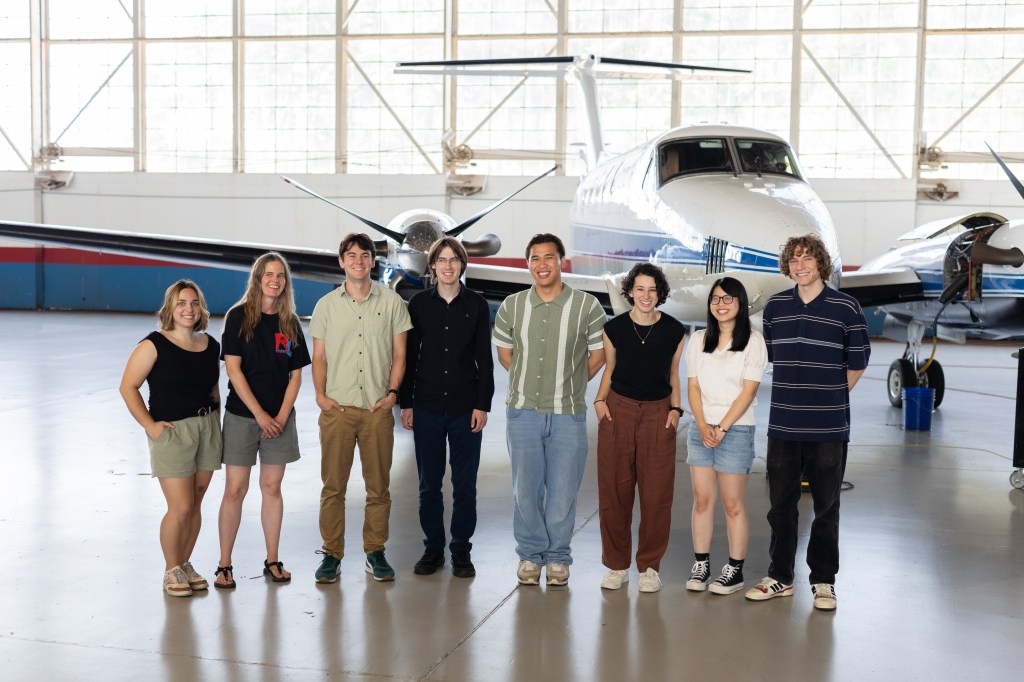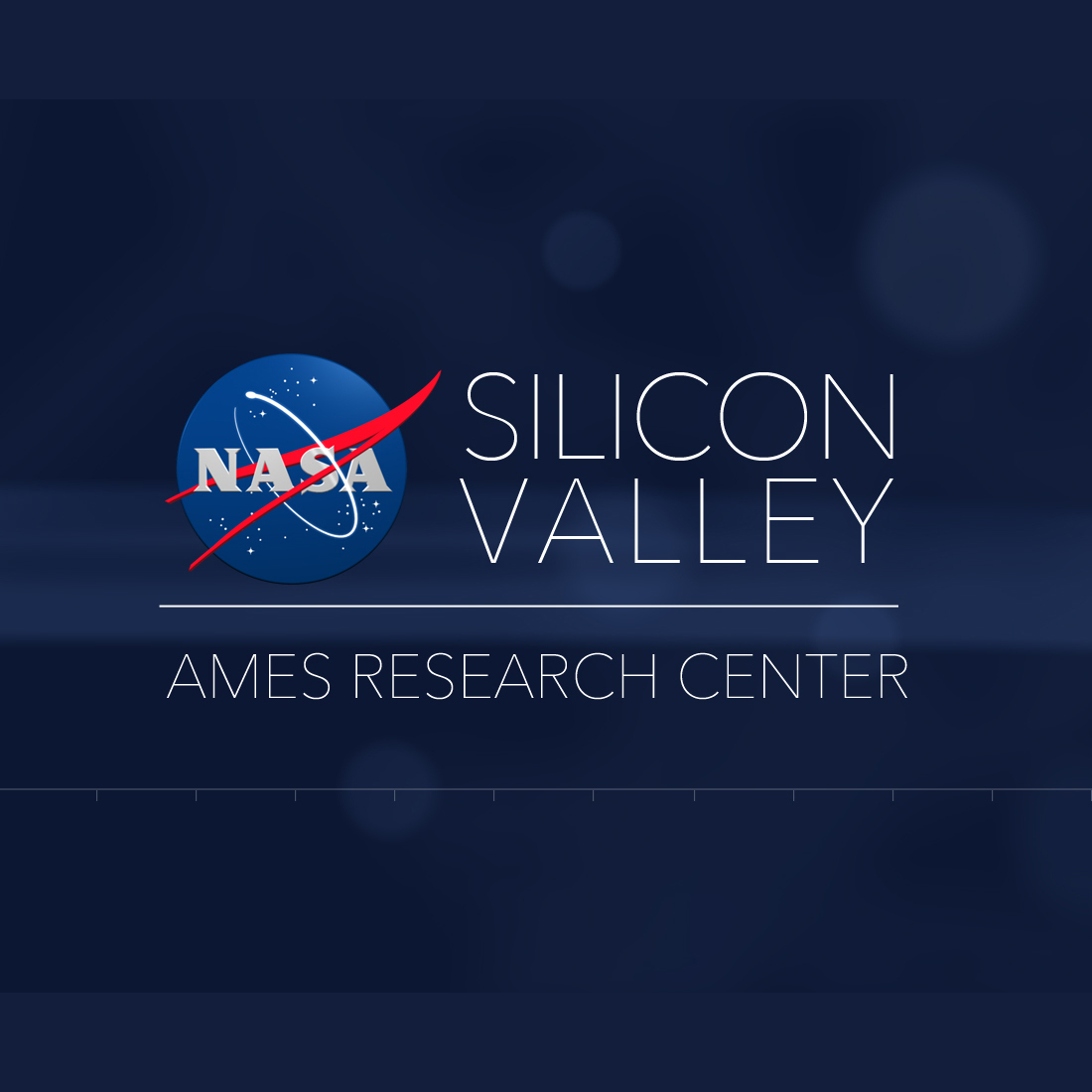NASA in Silicon Valley Laura Iraci MP3
A conversation with Laura Iraci, NASA Research Scientist and AJAX Principal Investigator at NASA’s Ames Research Center in Silicon Valley. For more information on AJAX, visit http://geo.arc.nasa.gov/ajax/ajax_index.html or tweet @NASAAJAX.
Transcript
Matthew C. Buffington (Host): You’re listening to NASA in Silicon Valley, a conversational podcast series from NASA’s Ames Research Center to chat with the various scientists, researchers, engineers, and all-around cool people at NASA.
In the news today, we have a neat story on nasa.gov/ames on pink pressure paint that is used in wind tunnels to better understand how air passes over airplane designs. We also have a few updates on the Kepler mission and how folks throughout the astronomy community are helping to focus research in the search for earth-like planets.
Today’s guest is Laura Iraci, Research Scientist and AJAX Principal Investigator at NASA Ames. We discuss NASA’s work on Earth Science and how when we better understand the Earth it helps advance space exploration. We also go into detail on the AJAX project and how it is able to measure ozone and greenhouse gases over California and Nevada. Without further ado, here is Laura Iraci.
[Music]
Host: I always like to start it off with, how did you get to Silicon Valley, but also, how did you get to NASA, because you know, it is NASA in Silicon Valley after all.
Laura Iraci: So, my mother thinks I got to Silicon Valley because I was trying to get away from her. So, I grew up in New York.
Host: That tends to happen.
Laura Iraci: Then I went to college, to grad school in Colorado, which is a two-hour time difference. It vexed my other. So then I figured for a job, I had to go further west. So, she thinks any day now I’m moving to Hawaii, just to mess with her.
Host: But in all fairness, it is really cold in upstate New York.
Laura Iraci: I miss the snow, really miss the snow.
Host: See, the way I always thought of especially the Bay Area, but California in general, is yeah, you don’t get all the seasons, you only get the good ones.
Laura Iraci: No you don’t. You only get the freaking summer. Oh, I hate the heat.
Host: Really? I grew up with no air conditioning in Ohio.
Laura Iraci: I grew up with no air conditioning in New York, so I despise the heat. But at least it’s not humid. But with this drought, the drought is ridiculous. I’m really worried about the fire season.
Host: This was one of the things I didn’t realize as much was a thing, from moving out here. Coming from D.C., it rains all the time, no big deal. I knew about the drought, but you don’t really know until you get here. And then, I’m walking my dog, and it’s like crunchy grass, but then every once in a while it’d be super nice and green, and then I realize no, they did a life hack and put fake grass in, which I kind of get a kick out of. I think that’s how I would do my landscaping.
Okay, so you went to school in Colorado and then came out here. Was it for work, or coming to NASA, was it an internship or some sort of doctoral thing?
Laura Iraci: The way I originally came to NASA actually was through a college summer internship, and it was a Goddard. It was the NASA Goddard Space Flight Center, and I spent a summer there working on stratospheric ozone depletion, which as it turns out, then I loved it so much I found a graduate program where I could study the same thing, but in the laboratory, because I’m more of a hands-on kind of person. And then, did that in Colorado for about five years, and then ultimately found my way back to NASA later. But, my interest in the atmosphere really came about because of a NASA internship.
Host: Wow. So like, by the time you applied for the job that was here at Ames, it was good, because you’d already had that experience, you’d already probably knew some people and were able to reference different things.
Laura Iraci: Right. In fact the fellow I worked for that summer at Goddard is the one who helped me find my grad school program. I asked him for suggestions like, who studies this field, and things were just getting going at that point. There weren’t a lot of degree programs in atmospheric chemistry in particular, and so there were just a handful of programs to consider. And he said there’s this professor at Colorado, I think she just moved to Colorado, just started there. And so, I was able to find her program and get enrolled there and ultimately got my degree there.
Host: And it’s a perfect fit especially for Ames, because I always think, when you think of NASA, people always tend to think of rockets and astronauts. And sometimes when you’re like no, earth science is a huge part of what NASA does, and sometimes you wonder, how does that fit? Studying planets and looking outside the solar system or within the solar system, we kind of have a big planet right here we can study, we can extrapolate.
Laura Iraci: Exactly, and being able to see it from space means we can see the whole thing. So, if you were just looking at the air quality in the Bay Area, that’s easy enough to do from here in the Bay Area, but if you want to see the air quality in Asia, or the air quality that’s going to blow your direction in four or five or six days, you want to be able to see the whole planet. And to do that, you need to be able to get into orbit, which is where NASA comes in.
In fact, NASA has a charter from congress to study the ozone hole, the ozone layer from space. And so, that’s really how NASA first got formally directed, I think, to study the earth’s atmosphere.
Host: Really? And that was from back when? Like, the ’80s, ’90s when that happened?
Laura Iraci: I actually don’t know if the authorization was from earlier, or if it was just in the ’80s when things got hot and heavy. NASA had been studying — it’s a really interesting story, I don’t know if you know the story of how the ozone hole was discovered?
Host: Go for it, I love it.
Laura Iraci: Before we use this, we should probably fact-check it, because this is coming from my ear, but the way I understand it is that there’s been a scientific presence in Antarctica for ages. And there was a fellow from the British Antarctic Survey who was taking measurements by looking up at the sun from the surface of the earth, and studying all of the ozone that was above him.
And most of the ozone resides in the ozone layer up in the lower stratosphere. And he was getting data that he didn’t understand, it just didn’t make sense. And so, he was checking it out and checking it out. It didn’t make sense, didn’t make sense, and he thought he was wrong.
So, he went to talk to the folks at NASA who’d been studying ozone from satellites. And he said, I’ve got these really crazy answers, can you tell me what you guys see when you look over Antarctica with your satellites?
And lo and behold, the NASA satellite had been monitoring the same thing, but had been throwing out the data as illogical.
Host: It was an outlier?
Laura Iraci: It was such a small amount of ozone, it couldn’t possibly be a true signal. So, they had been screening their data and throwing out these completely unexpected and thought to be unrealistic answers. And so sure enough, the signal of the ozone hole was in the NASA satellite data, but it had been pre-screened out. And so, when they put their heads together, they both realized — with both data sets, you could realize you actually had this unexpected phenomenon. And so, then they had to figure out how it was happening.
So, it wasn’t predicted there would be an Antarctica ozone hole. It had been predicted there would be a slow depletion of ozone globally due to the chlorofluorocarbons in aerosol cans. That’s probably the story you heard.
Host: Okay, yeah, I remember growing up as a kid, it was like the aerosol cans were bad.
Laura Iraci: Right. It wasn’t expected to be localized over the Antarctic the way it was. And so, there were three competing theories postulated at the time. And Ames actually put together the field campaign that went down to study in situ, to go to Antarctica with aircraft and measure the phenomenon, and see with of these three theories was correct.
Host: It’s fascinating. That kind of segues right into some of the AJAX work you’re already doing of, NASA has a satellite center going around that are taking measurements, and then actually sending a plane to validate, to be like yes, we’re on the right track, or hey, the satellite’s completely not calibrated right, because we’re picking up something you’re not seeing.
Laura Iraci: Right, and also to just be able to think a little differently about a data set. I think that’s something that comes from being out here in the Silicon Valley, and Ames’ heritage from when it was a NACA center was always very cutting edge in terms of thinking about different ways to do aeronautics, different ways to do engine design. And I think because we had that background in aeronautics and in thinking a little differently, and now in earth science, we had the capabilities at Ames to scramble that mission and to think about how we would study the ozone hole differently than anyone had thought about it before.
And so with the AJAX project, we can do the same thing, we can think about different science questions.
Host: The cool thing is, at least fact-checking the Antarctic story, even as the internet goes and checks Wikipedia to verify, we can validly say that is definitely what Laura thought it was at the moment of this recording.
Laura Iraci: Absolutely true.
Host: But circling to AJAX, for people who may not be aware or don’t work at Ames and get to hear a weekly update, what exactly is AJAX, what does that stand for, what is the core mission, what are you trying to do?
Laura Iraci: AJAX is the Alpha-Jet Atmospheric Experiment. It’s a neat project we have here at Ames that takes advantage of some of our partners here at the NASA Research Park, and it gives us an opportunity to put atmospheric sensors on an aircraft and get measurements of the California and Nevada area maybe two, three, four times a month, depending on when the plane is available and when the pilots have hours they can fly.
We measure all sorts of things like air quality in the Central Valley, where it can be really bad in the summer, to greenhouse gases that are emitted, say from this natural gas leak that just happened in Aliso Canyon.
Host: Near LA, right?
Laura Iraci: Yeah, San Fernando Valley, just north. That was for about four months, there was this horrible leak of methane gas. And so, that’s one of the sensors we happen to carry on the AJAX payload. We have a sensor that measures CO2 and methane and water, we have another one that measures ozone, and one that measures formaldehyde, plus a wind pressure temperature sensor.
Host: I’m going, are there multiple ongoing experiments and lab things going on, so it’s just a matter of when you’re able to get up and get data sets?
Laura Iraci: Right. We have about maybe six or so science questions we keep queued up in the back of our brains, and we wait for the right weather and we wait for the right satellite overpasses. And when we find out, we’re going to be able to have flight hours on Thursday, we pull out our planning sheets and say, which satellites are where, what does the weather look like, how hot is it supposed to be in Fresno, and we figure out which science target matches best with the flight opportunity.
Host: Do you always try to coordinate it so it’s like at the same time as a satellite’s going over, you fly at the same time?
Laura Iraci: If possible, that’s ideal.
Host: That’s the ideal.
Laura Iraci: But in reality, the satellite’s going way faster than the aircraft, so they will overlap for one or two data points anyway out of a whole two-hour flight. So usually, within a couple hours is considered reasonable agreement. The air changes slowly relative to how fast a satellite moves.
Host: Okay, yes, it figures going…
Laura Iraci: Even relative to how fast the aircraft moves. So, we try to get within an hour or two.
Host: And since you’ve been working on the project, what has surprised you, I guess, or what has been surprising, or even like, I did not think that was going to be a thing? Or has it been more so validating what people had already expected?
Laura Iraci: One thing we’ve been fortunate in an unfortunate sort of way to be able to do is to sample large wildfires. We’ve had several large wildfires in California in the last handful of years, and they’ve been close enough to Ames that we’ve been able to go and make measurements of the emissions from those forest fires. That’s a science target that’s under-sampled.
So, most of the emissions that you can look up in these inventory databases that would predict what’s emitted from fires in the west are based on prescribed fires, but most of the burning that happens in the west…
Host: By prescribed fires, what exactly?
Laura Iraci: The Forest Service will go out and do a small burn to clear some land, or maybe it’ll be grassland.
Host: Okay, so they mean to do it.
Laura Iraci: They’re on purpose, yeah. They pick them for temperate weather conditions when they won’t expand too much, and they’ll burn something off in advance of it lighting on its own and going crazy.
So, the conditions are different than when something lights on its own and goes crazy. So, the emissions are different, yet all of our databases are built primarily on these gentle, controlled burns. And so in the west, the databases are not terrible representative.
So, we’ve been able to go out and get some measurements around about six or eight now different forest fires, and right in the Sierras where it’s the true fuel mix, and get a better understanding particularly of how much methane is emitted from these fires, because methane is a potent greenhouse gas, as you know. And it’s not been well-studied how that changes over time, over the life of a fire, and from one fire to another.
Host: That’s fascinating. Have you been — let me think back. How long have you been working on this, what were you doing even before that? What was that trajectory to start working on this? Because you’re studying the stratosphere. Was there a project that you had originally came on, and then this just leveraged into this position?
Laura Iraci: So, I came to Ames working on laboratory chemistry, studying the chemistry of aerosol particles in the atmosphere. So, similar to my Ph.D. work, that was studying stratospheric aerosol.
Host: How fortuitous.
Laura Iraci: Exactly, studying aerosol, and the chemistry that can happen on particles in the atmosphere, and how it can affect the composition of the air. And then, somehow this partnership came about, and I honestly don’t know if it was the center director at the time who brought these partners to Ames, but the aircraft became available to us. And so, the center director said to the head of the earth science division, here’s an aircraft to do earth science with. And I suspect the division chief looked around and said, who’s dumb enough to say yes to a crazy new project? And I didn’t run away fast enough.
Host: This is good for the listeners who, if you’re not away, Ames is located in the heart of Silicon Valley, but it’s on Moffett Federal Airfield, used to be an old Navy base. But it’s one of the few — you think of a lot of NASA centers who have launch pads, or even some of the research centers that don’t. We have an airstrip, where people land regularly. It’s a working federal airfield.
So, how fortunate. You have other commercial or other groups, different flights already there. We can take advantage of our location to be able to take advantage of that.
Laura Iraci: Exactly, so we have the airfield, we have the partners with the aircraft, and we are located in a place that has some good atmospheric phenomena to study. So, we can get out over the Pacific where the air is supposed to be clean, and where the EPA presumes it’s clean air.
Host: Especially with the way the wind is moving, you can go out.
Laura Iraci: Exactly. So, prevailing winds are in from the water to the land from the west to the east. And so if you think of it, you think this clean air from over the Pacific, it hasn’t seen any pollution yet. Let’s see what happens when San Francisco and Fresno add all their junk to the air.
And then you actually go out there and you measure it and you realize it’s actually filthy already, before it even gets to California. And so, how are we going to meet these air quality standards that keep getting tighter and tighter to protect health, when we’re receiving air into the continental boundary that’s already half-full of pollution? You can’t solve that problem by stopping any emissions in San Francisco or in Mountain View.
Host: It’s a much bigger global…
Laura Iraci: Exactly, so it’s a really great location for us to study certain things about our atmosphere, one of them being the trans-Pacific transport of ozone and its precursor molecules.
Host: Wow. Okay, so one of the cool things about being here is also, you think the broad portfolio that Ames does. No matter what your interest is, there’s so much content and so many other things going on. Obviously you’ve been working in earth science, studying the ozone. What are some of the other things you see your peers and your colleagues working on that interest you?
Laura Iraci: Well, I can’t stop thinking about particles in atmospheres, and so there are particles in the atmosphere of Titan that I really want to study. Well, there’s somebody in our division who’s proposing how you might put a telescope on the moon and look back at earth. Pretty good vantage point, actually.
Host: The advantage of having a big planet here to study.
Laura Iraci: Just a handy little science place right there.
Host: So cool, yeah. So, it’s just interesting, the different things that are going on around here.
Laura Iraci: Yeah, there’s a project I really want to figure out how to squeeze into my life, that I want to get involved in. There’s a project in the aeronautics division looking at more fuel-efficient aviation, which means less pollution from aircraft, which is why I’m interested, because aircraft are a pretty big source of both what we traditionally think of as pollution, and what we’ve until recently separately categorized as greenhouse gases. So, both the emissions that lead to ozone, which makes your eyes water and lungs itch, but also the CO2 and black soot particles that can lead to warming of the atmosphere.
Host: That also fits into at least the things you think of that are traditionally NASA, but then you move into aeronautics and earth science. I have a fun time when I’m on a plane, and you’re looking out the window at the wing, and you see the little winglet that pops up, and you’re like, NASA did that. That was from studying, and that makes the plane more fuel-efficient.
Laura Iraci: Exactly. That’s the kind of neat stuff that’s so prevalent here. I need to find more hours in the day. We need someone to study cloning, and solve this problem of not enough hours in the day. Actually, I guess we could go about this either way. At NASA, we could either clone me.
Host: Or break the space-time continuum, go backward.
Laura Iraci: I was going to say, just slow down the rotation of the earth
Host: We know that to be true by evidence by Superman.
Laura Iraci: Of course, of course.
Host: Because you know, that’s how space-time works, is you spin the earth backwards, and then the earthquake happened. Funny, he never used that power in any other situation.
Laura Iraci: No, just that one time. I’d use it every day, like, I spilled my milk. I don’t feel like cleaning it up, let’s rewind the earth.
Host: Bring it on back. So you were saying earthquakes.
Laura Iraci: Speaking of earthquakes, did you hear about this disaster preparedness drill the other day — was it two days ago?
Host: Was this the one that was out of headquarters?
Laura Iraci: Yeah.
Host: I knew they were doing this test, and what I took away from it is, if you’re trying to reach somebody in D.C., they’re probably working from home or not available. That was my takeaway.
Laura Iraci: That’s pretty funny. The AJAX team, I got an email asking for us to task assets to go look at JPL, which had had this simulated landslide. And so, we have an airfield here that’s on bedrock, and so the earthquake they were using as a test, example…
Host: So for those, from time to time, the government will have these simulated tests, so in case something bad happens, we’ve already practiced and prepared. In this case, it was a southern California earthquake near JPL, and it was kind of like how does NASA react?
Laura Iraci: Exactly. So, we were preparing there was a landslide at JPL, and that the effects of it had actually been felt partway, all the way up to Santa Clara County here, where we are. So, since our airfield is actually on bedrock here, which is one of the reasons I think FEMA is collocated with us, since our airfield is on bedrock, we were proposing that AJAX could mobilize to do some aerial photography or some methane sensing.
And it was pretty neat, because I was not expecting this, I hadn’t heard about this exercise at all, and I came back from a meeting and sat down, and there was this whole stream of emails. And it was the exercise, and a bunch of other people had responded to it, and I thought, my gosh, what’s going on? But it was really clear in the headers, exercise, this is a drill.
Host: Yes, just making sure, this is literally a drill.
Laura Iraci: But, since we have a flight planned tomorrow anyway, I was like, we have a flight on Thursday. We could go down, and if you could give me an air traffic control phone number, I can try to get into the LA airspace, because I have never tried to get into the LA airspace, because that just looks like a nightmare.
Host: Yeah, having gone through LAX.
Laura Iraci: Well, there’s so many airports down there. There’s Burbank, there’s Riverside, there’s Ontario, there’s Van Nuys, which was in the way.
Host: You get a little bit of that with San Jose and San Francisco, but we’re kind of separated far enough from those that it’s not.
Laura Iraci: I’ve always wanted to sample across the southern end of Silicon Valley to look at the emissions from the Valley down southward out through San Jose down to Gilroy, but it’s the approach corridor to San Jose, to the San Jose Airport.
Host: You’d be going through the San Jose Airport, which is like, are they really going to redirect all these commercial things? It’s like, but I have a hypothesis I’m working on.
Laura Iraci: But I need to test my science. So I have to figure out — I’ve got some clever pilots who are usually game for a challenge, so I have to figure out how to set up the flight plan. And I think we can do it, because the approaches are so clearly laid out, they’re always done the same way. So, we can always predict what the air traffic controllers are going to want, so we should be able to outsmart it, and build a plan that’s everywhere else but there.
Host: Cool. Well, this has been super fun. If anybody wants to look you up or learn about some of the research or anything you’re doing, are you in the Twitter-sphere?
Laura Iraci: We’re in the Twitter-sphere, we’re @NASAAJAX.
Host: Nice.
Laura Iraci: I’m pretty slow at tweeting. It’s not my primary job function.
Host: Amongst many others, but you do.
Laura Iraci: I only do it on flight days, usually.
Host: So, if you’re tweeting @NASAAJAX, you’re going to get Laura responding.
Laura Iraci: You’re almost always going to get me.
Host: Excellent. Also, for the podcast, if anybody, we’re @NASAAMES, and we are using #NASASiliconValley. Thank you so much for coming on over.
Laura Iraci: Thanks for the conversation.

